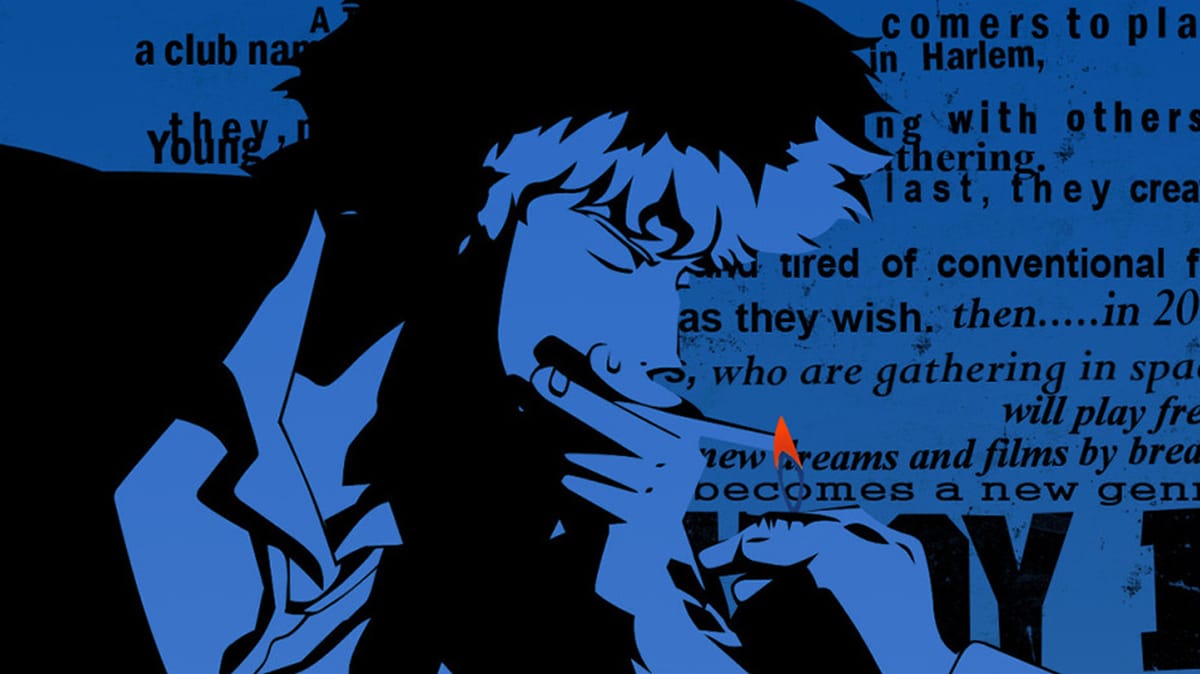
In their ongoing mission to chip away at artistic integrity in service of their almighty algorithms, streaming services have standardized the practice of making a little box pop up in the bottom right corner of the screen at the start of every single episode of every series they feature. “Skip Intro.” It is a strange practice for these platforms to actively encourage people not to watch portions of their own shows. But this seems to be a rather popular feature. Apparently, there are a good number of people who are just so busy that they absolutely cannot spare an extra minute or two to appreciate what is often the most creative segment of an episode. TV title sequences are not optional bonus features. They are parts of the episodes, integral parts at that. They are a means for a show to set a tone, to tell a story, to assert its identity. And beyond that, they are inventive, captivating works of art. So don’t skip them. Ever.
It has always been an uphill battle for title sequences to gain respect, going back to before their emergence as staples of television. For decades it was common practice for movie theaters to keep their curtains closed as the opening credits, which were viewed as inessential preamble, played. The curtains only opened when the opening credits ended and the so-called real film began. That changed in the 1950s thanks to the work of designer Saul Bass, who singlehandedly revolutionized opening credits (as well as movie poster design) in his work with directors like Alfred Hitchcock and Otto Preminger. Bass’s title sequences were short films unto themselves with designs that established the aesthetic identity of the film and immediately set the requisite tone. His opening for Vertigo is particularly extraordinary, with its close-up on a woman’s face and spiraling shapes within her eye set to Bernard Herrmann’s hypnotic score perfectly encapsulating the film’s dizzying eroticism. It was his work on the 1955 Preminger film The Man with the Golden Arm, though, that changed the perception of title sequences when its prints were sent to theaters with a note attached demanding that projectionists open the curtains before the credits. The broader message Bass and Preminger sent was that opening credits were an essential part of the film itself, not merely an appendix there for legal reasons, and that they deserved to be viewed with the same respect as any other part of the film.
The consideration Bass and others worked to make sure a film’s opening credits received should carry over to those of television shows, which have now become the primary home for creative openings. Opening credits in movies, though still sporadically present, have largely fallen out of style, with stylized credits sequences usually pushed back to the end of the film. On TV, the stylized title sequence remains a traditional practice, though nowadays those too are declining as more and more shows opt to use only a title card and put the credits either over the beginning of the episode or entirely at the end. Plenty of shows still stick to the full title sequence, though, or at least to one that covers all of the cast credits, and in these sequences there is still remarkable artistry on display.
Like the movie opening credits that Bass designed, one of the primary functions of a TV show’s title sequence is to establish the tone, the overall vibe of the show. Any title sequence worth its salt does this, and it doesn’t take a high-concept animation to make it work. Stranger Things creates an addicting vibe with opening credits composed of nothing but the letters that make up the show’s title. But its simple, analog nature, with the film grain and the flickering red neon light of the letters that bleeds past their boundaries, is a perfect expression of the show’s nostalgic retro vibe, recycling the style of the ‘80s movies it is based on, and infusing through the flickering red and the synth score the cozy eeriness which is the show’s tonal home. A show like Twin Peaks relies on the tonal statement its titles make each week. For a show that delves so deeply into surrealism and cosmic mystery, the title sequence focusing on the area’s natural beauty keeps the show grounded, attached to the warm beating heart of its setting that needs to be there so the darker elements can play off of them.
Beyond just establishing a vibe, title sequences can be storytelling devices unto themselves, contextualizing how we view the body of the show. The Simpsons is probably the most famous example, with its opening showing how each member of its title family finds their way home to the couch and thus providing quick characterization. A similar journey-home structure is used in the title sequence of The Sopranos. Emerging out of the Lincoln Tunnel, we follow Tony’s route home, seeing the New York skyline through his car’s side mirror as he goes onto the New Jersey Turnpike. Such an image signals the show’s departure from the big time New York mob stories like The Godfather, the stories Tony and his underlings are obsessed with and with which the show puts itself in constant conversation. We are literally putting New York in the rearview mirror and heading somewhere else. The title sequence paints Tony as an important, regal character by showing only bits and pieces of him. We see a silhouette of him lighting his cigar, a close-up of his hand on the steering wheel, his eyes through the rearview mirror. The final reveal of his face does not come until the final shot of the sequence. We do, however, focus on the world Tony is driving through, the new age gangster setting that takes the place of Little Italy, with its factories, railyards, and pizza joints. The whole sequence gives the impression of a king surveying his territory, giving us a primer on the show’s world and the man who rules it.
Another series which uses its title sequence as a storytelling device is Severance. Certainly, the trippy visuals do plenty on their own to establish the show’s befuddling mysteriousness, but they also represent many of the show’s themes, as we see a struggle for balance between Innie and Outie Mark, the events of each of their lives affecting that of the other in ways neither is fully aware of. The images of a black rot seeping out of Mark’s trash bin that comes to resemble his shadow and of Outie Mark lugging his Innie around as though he were a large balloon in a strong wind serve as snapshots of the show’s psychological musings. The second season’s title sequence builds on these ideas by having Mark’s Innie and Outie begin to interact and discover each other’s worlds to reflect the two personas merging in the show. Then there is The Americans, whose thirty-second title sequence serves as a perfect thematic precis even without the use of any of the show’s characters or scenes. It juxtaposes American and Soviet cultural imagery, cutting back and forth between them frantically and putting them side-by-side in the same frame until we end with an explosion. It represents how our two main characters become increasingly torn between their American and Russian identities until they finally collide.
This post is for paying subscribers only
Subscribe now and have access to all our stories, enjoy exclusive content and stay up to date with constant updates.
Already a member? Sign in
